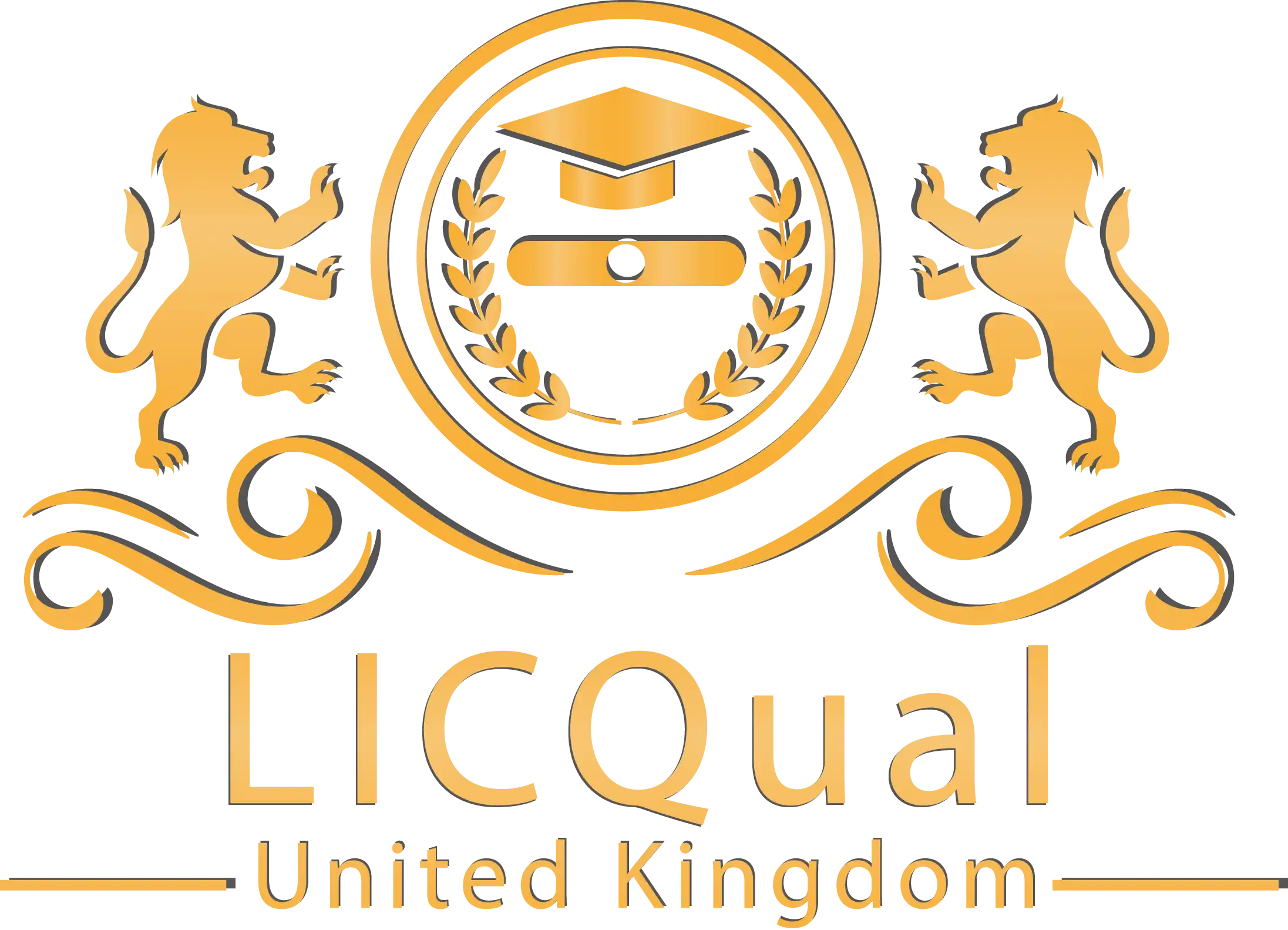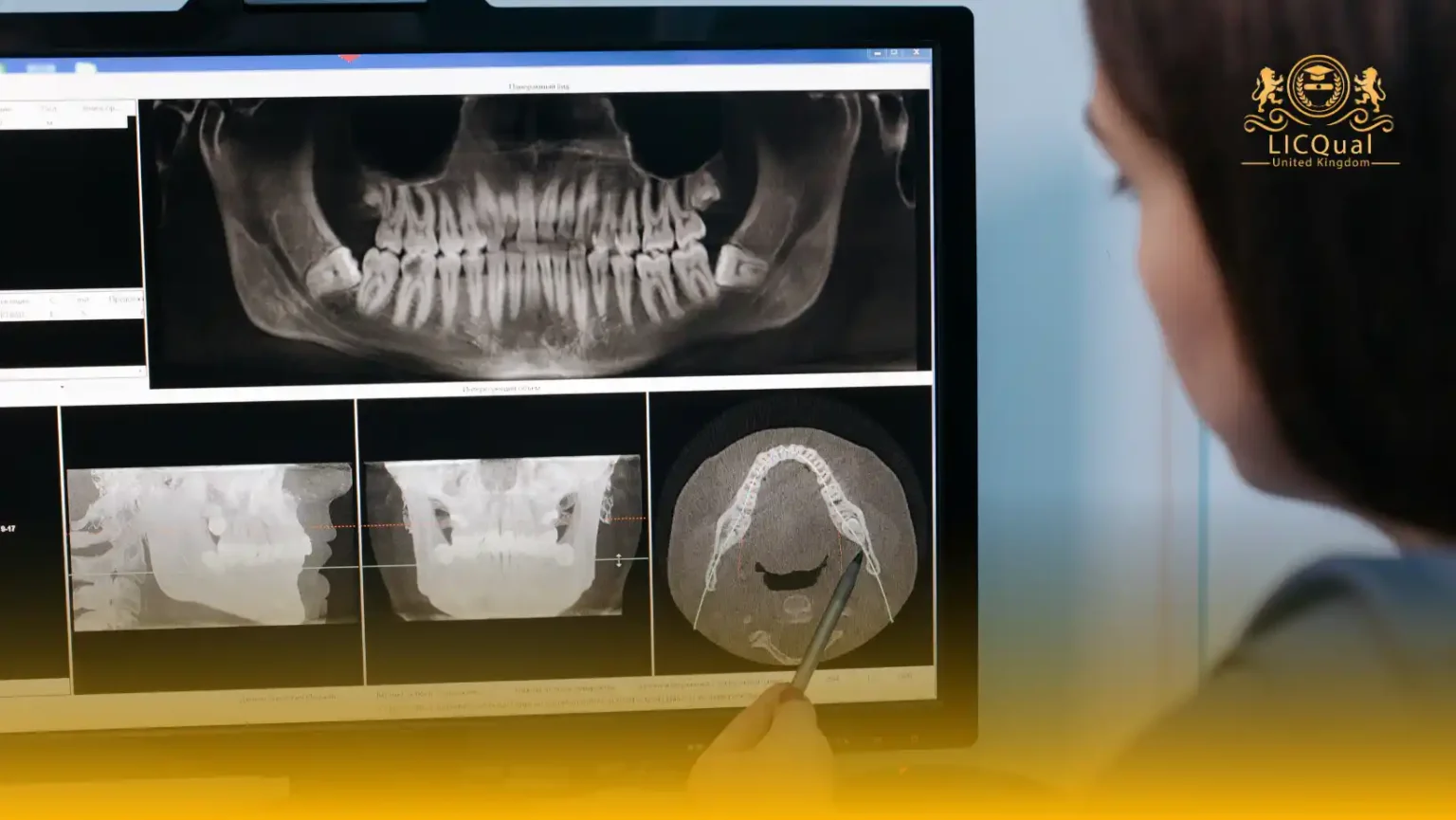Are you ready to expand your dental career with advanced imaging skills? The LICQual Level 3 Certificate in Dental Radiology is the perfect qualification for dental professionals who want to master the art and science of dental imaging and radiography. This Level 3 Dental Radiology Course combines theory, practical training, and real-world application to help you capture, interpret, and utilize high-quality radiographic images safely and effectively.
Designed by industry experts, this Dental Radiography Certification Level 3 provides a deep understanding of dental X-ray techniques, radiation safety protocols, imaging equipment operation, and diagnostic interpretation. Whether you’re a dentist, dental nurse, or hygienist, this course gives you the confidence and competence to perform radiographic procedures with precision and professionalism.
The LICQual Dental Radiology Certificate emphasizes hands-on learning, ensuring that you gain valuable experience in using modern imaging systems and radiation protection tools. You’ll explore essential topics such as panoramic and intraoral imaging, radiographic anatomy, exposure parameters, and image evaluation — all aligned with international standards for dental radiology and imaging safety.
This accredited dental radiology course is ideal for those who want to enhance their technical skills and open new doors in clinical practice. By earning this qualification, you’ll strengthen your career profile and become a trusted professional in dental imaging and radiography. The course also supports compliance with health and safety regulations, ensuring you practice with the highest level of patient care.
If you’re passionate about dental technology and want to stay ahead in a rapidly evolving field, the LICQual Level 3 Certificate in Dental Radiology is your next step toward excellence.
Course Overview
Qualification Title
LICQual Level 3 Certificate in Dental Radiology
Total Units
6
Total Credits
24
GLH
120
Qualification #
LICQ2200642
Qualification Specification
To enroll in the LICQual Level 3 Certificate in Dental Radiology, applicants must meet the following criteria:
|
Qualification# |
Unit Title |
Credits |
GLH |
|---|---|---|---|
|
LICQ2200642-1 |
Principles of Dental Radiology |
4 |
20 |
|
LICQ2200642-2 |
Anatomy and Physiology for Radiography |
4 |
20 |
|
LICQ2200642-3 |
Radiation Physics and Safety |
4 |
20 |
|
LICQ2200642-4 |
Radiographic Equipment and Techniques |
4 |
20 |
|
LICQ2200642-5 |
Radiographic Image Processing and Quality |
4 |
20 |
|
LICQ2200642-6 |
Patient Care, Communication, and Record Keeping |
4 |
20 |
By the end of this course, learners will be able to:
Unit 1: Principles of Dental Radiology
- Understand the fundamental principles and purposes of dental radiology.
- Identify different types of dental radiographic images and their clinical applications.
- Explain the role of dental radiology in diagnosis and treatment planning.
Unit 2: Anatomy and Physiology for Radiography
- Recognise key anatomical structures of the head, neck, and oral cavity relevant to radiographic imaging.
- Understand physiological considerations that impact radiographic techniques.
- Relate anatomical knowledge to accurate positioning and imaging.
Unit 3: Radiation Physics and Safety
- Describe the properties of radiation used in dental radiology.
- Apply radiation protection principles to ensure safety for patients and staff.
- Understand legal and ethical requirements related to radiation use in dentistry.
Unit 4: Radiographic Equipment and Techniques
- Demonstrate knowledge of dental radiographic equipment operation and maintenance.
- Apply appropriate radiographic techniques for different types of dental images.
- Troubleshoot common equipment and imaging issues to ensure quality outcomes.
Unit 5: Radiographic Image Processing and Quality
- Perform image processing techniques to optimise radiographic image quality.
- Identify and correct common errors affecting radiographic images.
- Implement quality assurance protocols to maintain high standards in dental radiography.
Unit 6: Patient Care, Communication, and Record Keeping
- Develop effective communication skills for interacting with patients during radiographic procedures.
- Obtain informed consent and explain radiographic processes to patients clearly.
- Maintain accurate and compliant radiographic records and documentation.
The LICQual Level 3 Certificate in Dental Radiology is designed for dental professionals who aim to enhance their technical skills, advance their careers, and meet international standards in dental imaging and radiation safety. This course is ideal for individuals who want to gain expertise in modern radiographic techniques, understand safety protocols, and improve diagnostic accuracy within dental practice. Whether you’re an experienced dentist or a dental assistant aspiring to grow, this qualification is your pathway to professional excellence.
1. General Dentists and Practicing Clinicians
- Ideal for dentists seeking to strengthen their knowledge in dental imaging.
- Enables safe and effective use of radiographic equipment.
- Helps improve diagnostic accuracy for better patient care.
- Enhances confidence in interpreting X-rays and digital scans.
- Provides globally recognized certification for professional advancement.
2. Dental Hygienists and Therapists
- Perfect for dental hygienists who want to understand radiography fundamentals.
- Teaches safe exposure procedures and patient protection techniques.
- Improves coordination with dentists during radiographic assessments.
- Equips learners with essential imaging interpretation skills.
- Expands career opportunities in advanced dental care settings.
3. Dental Nurses and Assistants
- Designed for assistants involved in dental X-ray procedures.
- Covers the principles of radiation protection and safety standards.
- Builds confidence in equipment handling and image processing.
- Strengthens understanding of radiographic anatomy and positioning.
- Offers recognized qualification to boost clinical career growth.
4. Dental Technicians and Laboratory Staff
- Helps technicians understand the radiographic needs of clinicians.
- Provides insights into digital imaging and 3D scanning systems.
- Improves collaboration between dental teams and laboratories.
- Enhances understanding of imaging-based prosthetic design.
- Prepares learners for evolving dental technologies and workflows.
5. International Dental Professionals
- Ideal for globally practicing dentists seeking international recognition.
- Aligns with international dental radiology and safety standards.
- Strengthens credentials for overseas employment or study.
- Expands expertise across various imaging technologies.
- Adds credibility for global professional mobility.
6. Dental Educators and Academic Trainers
- Suitable for educators enhancing their radiography teaching methods.
- Provides updated knowledge on radiation physics and imaging systems.
- Helps design curriculum aligned with current dental radiology practices.
- Bridges theoretical learning with practical industry standards.
- Equips trainers to mentor the next generation of dental radiographers.
7. Career-Driven Dental Professionals
- Ideal for those aiming to specialize in dental radiology or imaging.
- Opens career opportunities in clinics, hospitals, and teaching institutions.
- Enhances employability and earning potential.
- Builds a strong foundation for further advanced dental studies.
- Supports continuous professional development and lifelong learning.
To deliver the LICQual Level 3 Certificate in Dental Radiology effectively, centres must meet the following criteria to ensure high-quality training and learner success:
- Qualified and Experienced Tutors: Centres must employ dental professionals with recognised qualifications and practical expertise in dental radiology to provide expert tuition and supervision.
- Adequate Clinical Facilities: Access to fully equipped radiography suites, including up-to-date dental X-ray machines, processing equipment, and radiation safety tools, is essential.
- Comprehensive Learning Resources: Centres should offer current and relevant learning materials, including textbooks, digital content, and practical aids tailored to dental radiology.
- Health and Safety Compliance: Strict adherence to radiation protection legislation, infection control protocols, and clinical safety standards must be maintained.
- Robust Assessment and Quality Assurance: Centres must implement rigorous assessment procedures aligned with LICQual standards and have effective internal quality assurance systems.
- Administrative Support: Efficient systems for learner registration, progress tracking, and certification management are required.
- Access to Supervised Clinical Practice: Centres should facilitate opportunities for learners to gain practical experience under qualified supervision in radiographic procedures.
Meeting these requirements ensures centres provide a professional, safe, and effective learning environment for dental radiology learners.
Assessment and Verification
All units within this qualification are subject to internal assessment by the approved centre and external verification by LICQual. The qualification follows a criterion-referenced assessment approach, ensuring that learners meet all specified learning outcomes.
To achieve a ‘Pass’ in any unit, learners must provide valid, sufficient, and authentic evidence demonstrating their attainment of all learning outcomes and compliance with the prescribed assessment criteria. The Assessor is responsible for evaluating the evidence and determining whether the learner has successfully met the required standards.
Assessors must maintain a clear and comprehensive audit trail, documenting the basis for their assessment decisions to ensure transparency, consistency, and compliance with quality assurance requirements.

